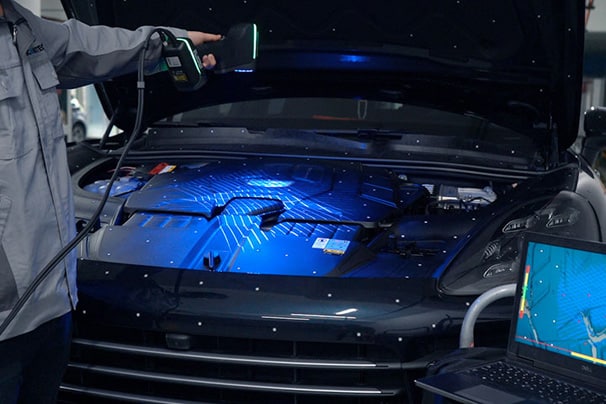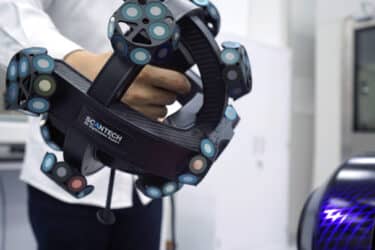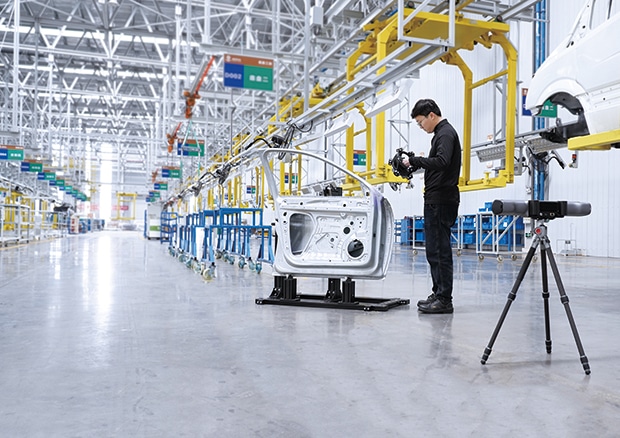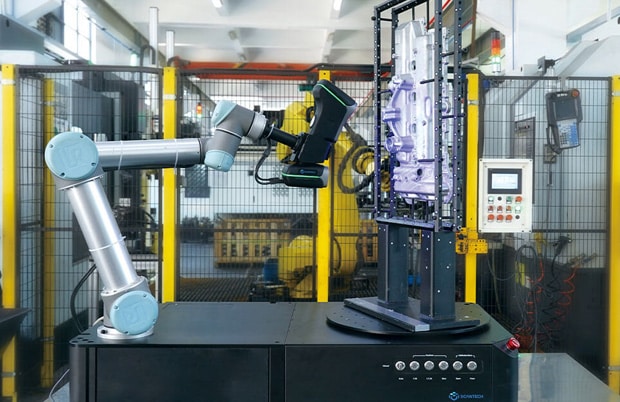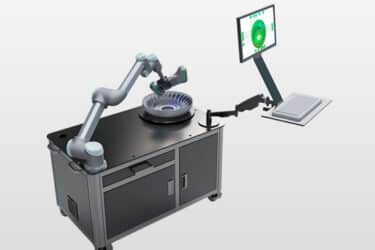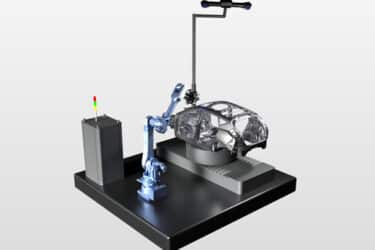Escáner láser 3D
Te proponemos una solución de inspección sin contacto que te permitirá obtener una copia digital de tus piezas para posteriormente poder realizar:
- control de calidad comparando tus mediciones con el CAD nominal y así ver los errores
- análisis de defectos estructurales y funcionales
- ingeniería inversa
- impresión 3d
Sariki es distribuidor oficial de SCANTECH para España y Portugal
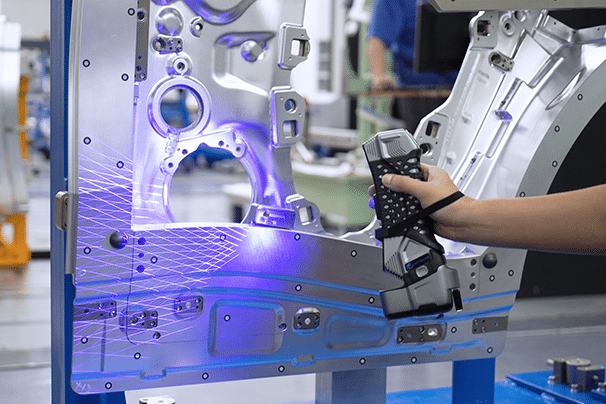
Escáner láser 3D: Revolucionando la captura de objetos en tres dimensiones
Los escáneres láser 3D han revolucionado la forma en que capturamos y representamos objetos en tres dimensiones. Estas avanzadas herramientas utilizan tecnología láser para capturar con precisión la forma y estructura de los objetos, creando modelos digitales tridimensionales con una fidelidad profesional.
En el mercado hay una oferta de escáneres 3D muy amplia: tamaños, precios, capacidades…y la elección puede ser complicada. Te recomendamos elegir el escáner más adecuado a tus necesidades, que elijas una empresa de confianza con personal cualificado para darte soporte y pueda responder a todas tus preguntas. En Sariki te ofrecemos todas las garantías y una gran variedad de tecnologías.
¿Cómo funcionan los escáneres láser 3D?
Los escáneres láser 3D utilizan una combinación de láseres y sensores para capturar información sobre la geometría y la textura de un objeto. El proceso comienza proyectando un haz de láser sobre la superficie del objeto a escanear. A medida que el láser se desplaza, los sensores captan la luz reflejada, registrando la distancia y el ángulo de cada punto en el objeto. Estos datos se utilizan para construir una nube de puntos, que representa la forma tridimensional del objeto con una gran precisión. Las nubes de puntos son millones de puntos XYZ medidos con precisión que definen la posición del objeto en el espacio.
Una vez realizado el proceso de escaneado existe la opción de descargar el modelo como nube de puntos, o bien convertirla en una malla triangulada, que puede transformarse en un modelo CAD o en un modelo 3D a todo color si admite el registro de texturas.
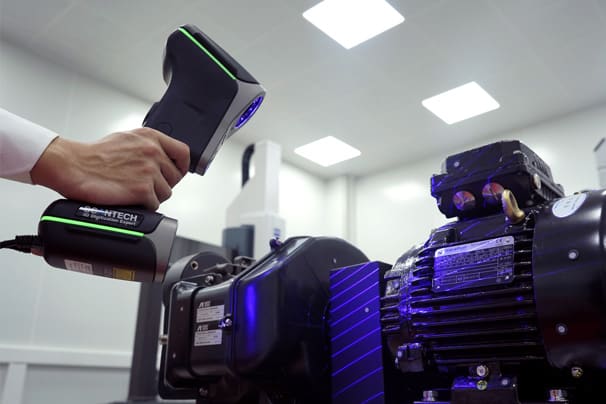
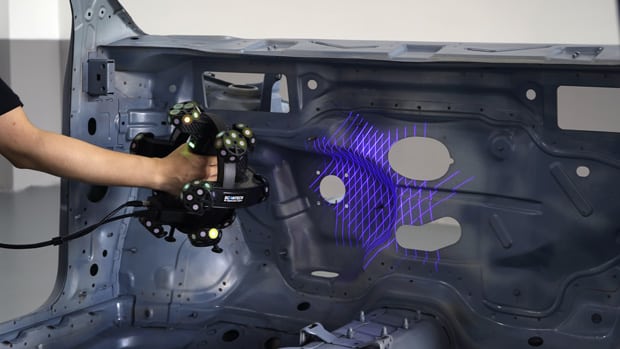
¿Cuáles son los factores a tener en cuenta a la hora de elegir un escáner 3D?
Tamaño del objeto a escanear y área de escaneado
Primero debes pensar en el tamaño del objeto que deseas escanear. Si vas a escanear una moneda pequeña, sería bueno un escáner 3D de corto alcance que pueda capturar detalles en alta resolución. Si planeas escanear un objeto o una pieza de gran tamaño, como una turbina eólica, necesitas un escáner de largo alcance con un campo de visión más grande.
Precisión
La precisión del escaneado es la desviación permisible de cada punto capturado. Generalmente, la precisión de los escáneres 3D está dentro de un rango de 0,01 mm a 0,1mm. Sería aceptable para la mayoría de las tareas utilizar un escáner 3D con una precisión de 0,06-0,07 mm. Si planeas escanear una pieza industrial compleja, elije un escáner 3D con alta precisión.
Ratio de escaneado
Cuando hablamos de la velocidad de escaneado, nos referimos a la rapidez con la que un escáner 3D puede capturar datos de un objeto determinado. La tasa varía según la cantidad de líneas láser, el tamaño del área de escaneado y el algoritmo del equipo. Un escáner portátil de gama alta puede medir hasta 2 millones de veces por segundo.
Resolución
La resolución describe la distancia mínima entre los puntos capturados a una distancia de escaneado dada. Cuanto mayor sea la resolución, más densa será la nube de puntos del escaneado. Cuando los detalles de un modelo 3D son esenciales para ti, necesitaras alta resolución. Si no, los requisitos de baja resolución serán adecuados.
Proyecto integral adecuado a tus necesidades
Te ofrecemos una solución integral adecuada a tus necesidades. La experiencia nos dice que la colaboración con el cliente es la base del éxito de este tipo de proyectos y por ello desde el principio trabajamos conjuntamente para identificar cuáles son los requerimientos principales y proponerte la mejor solución.
Te acompañamos a lo largo de toda la vida del proyecto: definición del proyecto, instalación, formación, programación, soporte al usuario y asistencia técnica. Sariki está formado por un equipo de 60 personas altamente especializadas y con más de 35 años de experiencia en el sector de la metrología.
Te acompañamos a lo largo de toda la vida del proyecto
Conoce nuestras soluciones de escáner láser 3D
SIMSCAN-E es un escáner 3D inteligente, inalámbrico y de tamaño compacto (tamaño de la mano) que combina un diseño ligero con un rendimiento excepcional.
El escáner 3D integrado KSCAN-Magic es el primer escáner del mundo que combina por primera vez la tecnología de láser infrarrojo y láser azul.
Escáner 3D de ultra-alta precisión
El escáner 3D AXE-B17 dispone de un sistema integrado de fotogrametría de iniciativa global que proporciona precisión en las mediciones de grado metrológico y de escaneo de grandes áreas.
TrackScan-P puede medir con precisión las piezas sin tener que pegar objetivos de referencia.
Idóneo para escanear objetos de gran tamaño
Trackscan Sharp S especialmente creado para medir piezas de gran tamaño a larga distancia con alta velocidad.
Idóneo para escanear objetos de gran tamaño
El sistema de escaneo 3D NimbleTrack Wireless es altamente compacto y ágil, diseñado para redefinir las mediciones 3D precisas de piezas pequeñas a medianas.
AM-DESK es una estación de medición 3D automatizada que consta de un sistema de control inteligente, varios servomecanismos, un sistema de seguridad y un sistema de control de movimiento.
AM-CELL C es un sistema de medición 3D óptico automatizado para piezas de tamaño medio a grande.
AutoScan-K, es un sistema de inspección 3D automático, que realiza inspecciones sin contacto de lotes en línea a alta precisión.
Diseñado para la aplicación de control de calidad automatizado
AutoScan-T42 está especialmente diseñado para el control de calidad automatizado en las condiciones de flujo producción, lo que facilita a las empresas lograr la combinación óptima entre coste y eficiencia.


